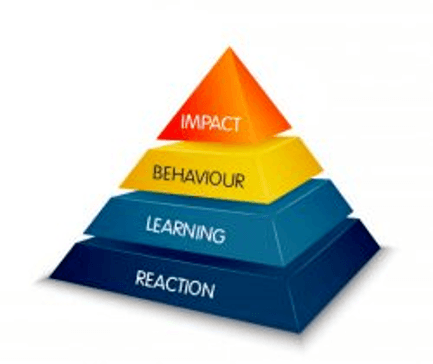Estimate The ROI Of Your Corporate Training Program
Given the significant investment of time and money organizations make in workforce training programs, there is an intrinsic need to ascertain their impact on business. Not only does this have a bearing on approvals on further investments, but it can also serve as a great cue to determine which programs are delivering impact and tweak or update the ones that aren’t.
Challenges In Measuring The Business Impact Of Your Workforce Training Programs
However, there are challenges associated with this exercise of determining the impact of workforce training on business. Without the supporting analytics that can help confirm the business impact, L&D teams often find it difficult to showcase the impact on business and justify the ROI. I typically see the following 2 reasons given by L&D teams on why this is a challenging task:
- Standard reports from LMSs do not provide the required perspective or actionable insights.
- There are limited manpower and resources (tools) to collect data, analysis, and validation in business.
As a result, this area is often neglected, or the exercise takes so much time that it may now be too late to apply the actionable insights. As a result, the business finds that the training investment of a given financial year will not really help them see the impact of the workforce training on the business goals for the year.
What Will Help You Measure The Business Impact Of Your Workforce Training Programs?
Focus on L&D metrics is not enough. I believe that the L&D teams need to look beyond the basic assessment of training impact, which typically includes:
- The number of training registrations
- The training completion rates
- Learner reaction/feedback on training
- Learner reaction/feedback on the trainer
- Assessment scores
The Need Of The Hour
What is required is to map the evaluation of the L&D parameters to the parameters the business wants to see. Essentially, you need to couple the L&D metrics with the business metrics. Let me illustrate how you can work with the combined view—L&D and business—with an example.
Training need: A sales team needs to undergo training for the new CRM tool as the organization moves from multiple tools or Excel-based trackers to a single, enterprise-wide tool.
Audience profiles:
- Set 1: sales executives, sales managers, and Head of sales—maps to acquiring 3 levels of tool proficiency.
- Set 2: CEO and COO—only dashboard review—with a focus on actionable insights.
The TNA would lead the L&D teams to create training that would help the sales team achieve the required proficiency levels. This would be duly validated through assessments.
However, the focus is only on the L&D metrics and the business metrics are currently missing. For instance, the expected gain from the sales manager was that with the new CRM tool, the individuals spend less time creating reports and more time on prospecting and customer engagement. This should translate to a 12.5% increase in time spent on prospecting and customer engagement—basically, an additional hour/executive/day. This should have a proportional impact on leads conversion. You see how the two teams are looking at very different pictures!
The Way Forward
Unless the L&D teams work with the sales team to identify how the business impact of training will be measured, the desired gain will not be demonstrated. This exercise—to couple the L&D metrics with the business metrics—needs the following:
- There must be a strong collaboration between the L&D teams and the business teams from TNA to training deployment, collation, and interpretation of data that will help determine the impact of training on the business.
- During the Training Needs Analysis (TNA) phase, the two teams must clearly identify the parameters that will be used to illustrate the direct impact of training on business.
- All through the journey, a strong communication link must exist between the two teams so that both teams indeed look at the same picture— the L&D teams should speak the language the business team wants to hear.
How Can You Accomplish The Mandate To Measure The Business Impact Of Your Workforce Training Programs?
There are several models that can be used to ascertain the business impact of workforce training programs. At EI Design, we use a custom approach, an adaptation of the Kirkpatrick’s model of training evaluation.
For each level:
- We first identify exactly what is being measured.
- Then, we look at the outcome of this evaluation and see how we can use it to enhance the business impact of the given workforce training program.

- Reaction
Objective: As a first step, we need to validate the learners’ reaction—did they find the training useful, was it relevant, will the acquired learning be easy to apply on the job, and so on.
From an evaluation perspective, this feedback allows L&D teams to get the basic insights into if the training was relevant and useful. Furthermore, would it help the learners apply the learning on the job? If there are any gaps, they can fix them through remediation or reinforcements. - Learning
Objective: The TNA helps the L&D teams arrive at the learning objectives of training. The second level helps them validate if these learning objectives were met.
From an evaluation perspective, this feedback allows L&D teams to measure if they met the required learning mandate—this could range from knowledge gain to triggering a behavioral change. - Behavior
Objective: The third level is used to evaluate if there is a change in the learners' behavior that is directly attributable to the training.
From an evaluation perspective, we are moving up to validate the application of the acquired learning leading to behavioral change. - Impact
Objective: The fourth level is used to evaluate the gain or impact of the training.
From an evaluation perspective, this should validate if the goal of the desired gain that the business had sought—that is, the business metrics—was met.
EI Design’s Approach: Assess The Business Impact Of Workforce Training
At EI Design, we use the following approach to assess the business impact of workforce training and we leverage the Kirkpatrick’s model of training evaluation. We overlay this on a learning and performance ecosystem to deliver training and ascertain its impact.
1. Training Needs Analysis (TNA) And Methodology To Measure The Training Impact
As I had highlighted in my example, besides identifying the learning outcomes, we focus on collating the improvement areas, the key parameters where the business wishes to see a tangible improvement. We also identify how this training impact will be measured. This needs a methodology to be defined that encompasses:
- What would be measured?
- How will this data be collated?
- How will the data be analyzed?
- Who (manpower) would be responsible to pool, collate, analyze, and so on?
- Additionally, to present the impact, we also secure the baseline data (current state) and quantify the anticipated gain (desired state).
2. Select The Right Training Delivery Format
The next step is to select the learning format—ranging from online, blended, or facilitated—that will resonate with the audience, for instance, should it be on the go, available within their workflow, or facilitated or a blend, and help them meet the learning objectives [1]. Sometimes, we recommend other supporting measures to achieve the business mandate, for instance, coaching or mentoring.
3. Identify The Learning Strategy
The right learning strategy helps the learners engage, acquire the learning, and apply it on the job. Besides the formal training, there must be room for Just-In-Time learning aids [2]. These nuggets are available within the learners’ workflow and go a long way in supporting both learning and business mandates. Additionally, we support the program through teasers (before the training), reinforcements, and challenges (after the training) to offset the "forgetting curve" and ensure learners are well equipped to learn, apply, practice, and gain the required proficiency and behavioral change.
4. Validate The Learners’ Gain
This focuses on assessments to determine if the learning acquisition was in line with the learning mandate. We integrate additional measures to facilitate the application of learning (business mandate).
5. Assess And Measure The Business Impact
This crucial step entails looping back to the TNA phase and seeing if the identified parameters show the required improvement. If not, we assess what reinforcements or remediations would help the business see the desired impact. This may impact the selections made in step 2 (training format), step 3 (learning strategy) or step 4 (validating the learners’ gain). While there is no single approach that can help you measure the business impact of workforce training, I hope my article gives you several practical cues you can use to measure the business impact of your workforce training programs. Meanwhile, if you have any specific queries, do contact me or leave a comment below.
References:
[1] ILT To Blended Or Online Training Transformation – Featuring 5 Examples
[2] 15 Types Of Microlearning For Formal And Informal Learning In The Workplace
Read More:
- eBook: eLearning Trends In 2020: Featuring Tips On How You Can Leverage Them For Learning, Performance Gain, And Behavioral Change
- eLearning ROI Case Study: How To Maximize Your Returns
- eBook: Practical Approaches To Determine The ROI Of eLearning – Using Kirkpatrick’s Model Of Training Evaluation
- 5 Tips To Maximize The ROI Of Online Training
- How Can You Measure The Learning Effectiveness Of Online Courses And Create A Positive ROI?

